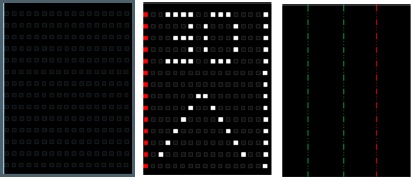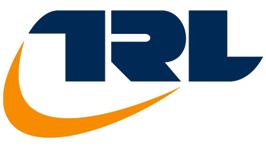INROADS
| INtelligent Renewable Optical ADvisory System |
01/12/2011 - 30/11/2014

KEY DOCUMENTS
Road studs (also commonly known as cat‟s eyes) are used around the world to delineate, along with painted lines, road space through retro-reflective spheres, which are illuminated by vehicle headlights. In recent years, the use of LED lights within road studs has been developed which has the significant advantage that the road studs are more visible due to active lighting than is achievable through reflection alone, can use dynamic colours and can be seen at angles that would not be reflected by headlights, e.g. the outline of a curve in the road which would only be illuminated by reflection as the car travelled around the curve. These properties make LED road studs useful for locations where there is an increased risk of accidents such as unlit country roads, but their use has been predicted to increase generally on unlit roads, both major and minor, as an alternative to traditional street lighting. Typically, the LED lights are a single colour, such as white for lane delineation or red for the hard shoulder for example, although the potential to have active lighting, such as blue in cold weather or red if a vehicle is travelling too close to another have been explored. There will be a trade-off between the potential additional information that could be achieved using additional colours, and the potential to confuse or distract drivers.
This project aims to develop new intelligent lighting applications, tools and methods, integrating LED lighting across the highway that will enable the more effective operation, planning, design, repair and maintenance of the highway network. It will improve safety and service level, reduce vulnerability of transport networks to incidents, assure high-quality process without data loss and errors and reduce CO2 emissions by maximising the use of the existing asset and reducing the need for additional road construction. The integration of communication technology, and for certain applications, sensors within the individual units will enable enhanced traffic management and driver information and this is what will represent the significant step forward over existing systems, as the lights will be able to communicate with each other and with a central control. The potential for units to be powered by renewable energy, specifically solar or piezoelectric, to reduce carbon emissions and to be truly self contained will be explored; this would allow for their use on sections of highway with no readily available power source. For certain applications, a wired power source would be required in order to have 24 hour illumination, or back up power. It is proposed that there would be patches of flush mounted lights at set intervals across the carriageway, as shown in the first image to the right, sufficiently large to convey useful information, as well as edge and centre line illumination. In certain, limited areas, it may be useful to have more extensive coverage in order to guide traffic safely.
The number of potential applications is considerable and the project team proposes to demonstrate a limited number of trials, each of which will provide proof of concept for other applications. Some of the basic functionality considered is adaptive road marking; where the lights could be used to delineate traffic flow, to enable more lanes to be operating in one direction depending on the time of day, or they could be used in tolling areas to direct traffic towards open booths.
More advanced applications can be realised through the integration of sensors within the LED units; this would go some way beyond the current state of the art technology, as the integrated sensor and communications systems would enable the lights to monitor and adapt to certain traffic activities, to communicate with each other and with traffic control centres. The lights could be set to a low power/low lighting setting and brighten to full power as vehicles approached, warnings could be made based on real time monitoring of traffic flow and environmental conditions, such as temperature, rainfall and ambient light. Monitoring of real time traffic data would also enable advance warning of queues and to help smooth the concertina effect of stopping and starting at traffic signals.
Improved management of traffic flows is generally accepted to improve safety; in order to ensure that this is the case, the human perception of active lighting should be explored in order to ensure that the safety benefits are maximised and to avoid adverse effects such as information overload or confusion.
LED lighting technology is increasingly mature, and can be used off-grid when powered by a small integrated solar cell for example. Integration of communications and potentially sensor devices will increase the power requirements. The power requirements will be assessed with potential for a self contained unit consisting of renewable power supported by a battery. The two main solutions to be investigated will be an integrated solar panel, and piezoelectric generation of power, although other options will also be explored, as will the potential for multiple technologies to be integrated to back each other up.
The ultimate aim of this project is the development of an intelligent LED road stud, with integrated communication and sensor systems, that is compatible with existing traffic management infrastructure, and which can provide some or all of its power needs through renewable sources. The safety of such a system in terms of the lighting and information effect will be subject to human factor studies, whilst any potential negative effect on ride comfort or skid resistance will be tested in the laboratory and in field trials. The robustness and performance of the individual units and multiple units will be validated through field tests, and a subsequently road trial in Israel.
|
|
 
|
|
Methodology
The project will follow a logical progression of work as summarised by the proposed work packages are presented below:
Work Package WP2: Developing Requirements
This work package will refine requirements for the IRS based on feedback from industry representatives at a workshop to be held in Brussels and input from the project team on functional requirements, dimensions, materials and installation techniques. A cost benefit analysis and selection of specific applications will follow.
Work Package WP3: Communications
In WP3 the communication requirements for the intelligent road studs will be developed. A high level design for the proposed communication solution with be created and modelled followed by development of a proof of concept to facilitate real world tests, ahead of the development work to integrate the communication subsystem into the prototype studs.
Work Package WP4: Power requirements of selected applications
The target of this package is to develop power requirements for LED applications in the framework of the project based on all existing technologies to reduce power consumption. During the work on this package, new techniques for power consumption reduction will be developed. Power requirements will be developed for LED units and for communication media. It is necessary to mention the application elements distribution will influence overall system power consumption, so installation guidelines should be strongly tied with power consumption requirements.
Work Package WP5: Sensor systems for incorporation into selected applications
The main objective in WP5 is to design and develop appropriate embedded sensor systems for autonomous, intelligent road studs built into road pavements. The tasks comprise specification and selection of sensors with respect to different applications (e.g. traffic flow, safety, axle loads, surface conditions), subsystem design, embedded digital post-processing, engineering of an evaluation model, and the proof of concept (pilot application). Based on the proper sensor selection and the basic systems conditions a pilot design of the sensor subsystem will be developed.
Work Package WP6: Human Factors – Response to LED lighting and optimal design
This WP will investigate the perception and behavioural reaction of the drivers to the proposed LED applications, and will produce recommendations on the photometric, colorimetric and geometric design, including photometric and psycho-visual evaluations. It will also produce recommendations on the design for the various proposed embedded LED applications, focusing on the driver‟s understanding of the proposed systems, and on their expected behaviour.
Work Package WP7: Intelligent Road Stud (IRS) for selected applications
The key objective of the project is to develop an Intelligent Road Stud (IRS) Solution that applies to the applications and criteria defined in WP2. The IRS should take into account the power, communication and sensor requirements defined in previous work-packages, and will specifically address those aspects related to installation, maintenance and renewal techniques and tools in order to increase the efficiency of the road infrastructure management and, decrease installation and maintenance costs.
Work Package WP8: Validation (field and road) testing
Laboratory, field and road trials will be carried out in order to evaluate the benefits associated such as cost, CO2 and safety. In this WP prototype, integration and lab testing will be carried out to ensure smooth integration of the different hardware: sensors, actuators and communications. Partial testing will be done to ensure the integrity of the system at a lab environment before a full scale road test.
Work Package WP9: Reporting and Dissemination
WP9 is dedicated to dissemination of the project outcomes, though, for example, development of case studies for specific applications, articles in external scientific journals, a final conference and a final report. The partners‟ extensive communication and dissemination links will be fully utilised.
|
|

|
Transport Research Laboratory
Crowthorne House-Nine Mile Ride
Wokingham- Berkshire, RG40 3GA,
United Kingdom
Martin Lamb, mlamb@trl.co.uk
|
|
Please feel free to contact the partners for any suggestions, references, material experiences, etc related to the INROADS project.
|
|

|
Austrian Institute of Technology (AIT)
|
 |
Centro para la Investigacion y Desarrollo en Transporte y Energia (CIDAUT)
José Antonio Gutierrez Mendez, physicist and Alejandra Garcia Melendez, alegar@cidaut.es |
|

|
Desarrollo de Sistemas Tecnologicos Avanzados (DSTA)
|
|
|
NETIVEI ISRAEL
|
 |
Institute Francais des Sciences et Technologies des Transports, de l'Amenagement des Reseaux (IFSTTAR)
|
|

|
Siemens Mobility, Traffic Solutions
Paul Brookes, engineering Manager,
|
 |
INNOWATTECH
Haim Abramovich, Prof. Aerospace Structures,
|
|